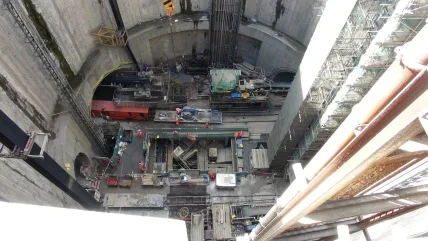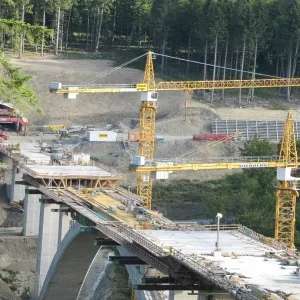
In the modern world, the construction industry, including the specialised field of tunnelling, plays a crucial role in infrastructure development. Tunnels are essential for transportation systems, water supply, sewage, and various underground utilities. However, the successful completion of tunnelling projects relies not only on technical expertise but also on accurate information and effective communication. In recent years, misinformation has emerged as a significant challenge in the tunnelling industry, posing various dangers and risks to projects, workers, and the public.
Understanding Misinformation in the Tunnelling Industry: Misinformation in the tunnelling industry refers to the dissemination of false, inaccurate, or misleading information regarding project specifications, geotechnical conditions, safety protocols, and other critical aspects. This misinformation can originate from various sources, including misinterpretation of data, inadequate communication between stakeholders, lack of transparency, and deliberate spread of false information for personal gain or competitive advantage.
Dangers of Misinformation:
- Safety Hazards: Misinformation about ground conditions, geological risks, or structural integrity can lead to serious safety hazards for tunnelling workers. Incorrect information may result in inadequate safety measures being implemented, increasing the risk of accidents, collapses, and injuries within the tunneling environment.
- Project Delays and Cost Overruns: Misinformation can disrupt the planning and execution of tunnelling projects, leading to delays and cost overruns. Inaccurate data regarding geological conditions or underground utilities may necessitate costly redesigns, additional excavations, or unexpected repairs, impacting project schedules and budgets.
- Compromised Structural Integrity: If misinformation leads to incorrect design parameters or construction techniques, it can compromise the structural integrity of tunnels and underground structures. This jeopardises the long-term safety and functionality of the infrastructure, posing risks to both workers and the public who rely on these tunnels for transportation or utilities.
- Environmental Impact: Misinformation in tunnelling projects can also have adverse environmental consequences. Incorrect assumptions about groundwater flow, soil stability, or ecological sensitivities may result in unintended environmental damage, such as contamination of water sources, habitat destruction, or disruption of natural ecosystems.
- Legal and Reputational Risks: The consequences of misinformation in tunnelling projects extend beyond immediate safety and financial concerns. Inaccurate information can lead to disputes, litigation, and damage to the reputations of project stakeholders, including contractors, engineers, and government agencies responsible for oversight.
Addressing the Challenges:
- Data Verification and Validation: To combat misinformation, it is essential to establish robust processes for verifying and validating data related to tunnelling projects. This involves conducting thorough geological surveys, geotechnical investigations, and ground truthing exercises to confirm the accuracy of information before proceeding with construction.
- Collaboration and Communication: Effective communication and collaboration between project stakeholders are critical for preventing and addressing misinformation. Clear channels of communication should be established to facilitate the exchange of accurate information, promote transparency, and foster trust among all parties involved in the tunnelling project.
- Embracing Technology: Technology can play a significant role in mitigating the risks of misinformation in the tunnelling industry. Advanced geological modeling software, real-time monitoring systems, and remote sensing technologies can provide valuable insights into ground conditions, allowing for more informed decision-making and proactive risk management.
- Education and Training: Training programmes should be implemented to educate tunnelling professionals about the dangers of misinformation and the importance of data accuracy. This includes providing instruction on best practices for data collection, interpretation, and dissemination, as well as raising awareness about the potential consequences of relying on false or incomplete information.
- Regulatory Oversight: Government agencies responsible for regulating tunnelling projects should implement stringent standards and oversight mechanisms to ensure compliance with data accuracy requirements. This may involve conducting independent reviews, audits, and inspections to verify the integrity of project information and hold stakeholders accountable for any discrepancies or misinformation.
Conclusion:
Misinformation poses significant dangers and risks to the tunnelling industry, threatening the safety of workers, the success of projects, and the integrity of infrastructure. Addressing this challenge requires a concerted effort from all stakeholders, including engineers, contractors, government agencies, and technology providers. By prioritising data accuracy, promoting transparency, and embracing technological innovations, the tunnelling industry can minimise the impact of misinformation and ensure the safe and sustainable development of underground infrastructure for future generations.







